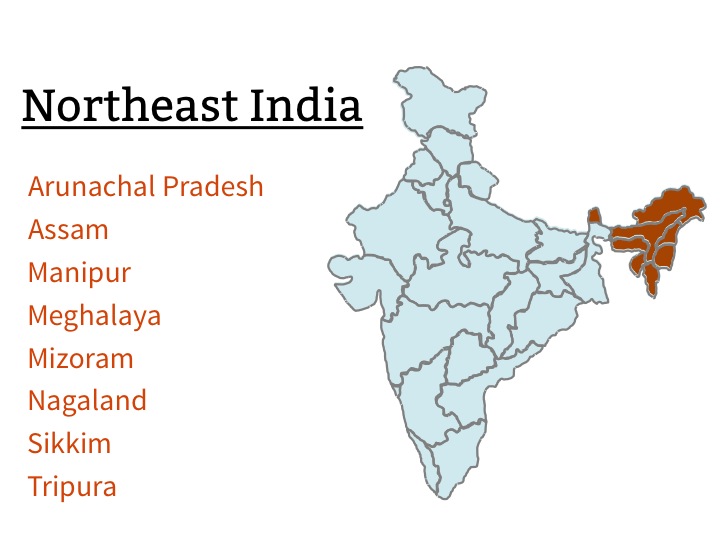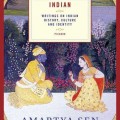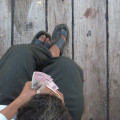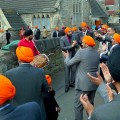
If you want to start a lively and quickly tense discussion among Indians, have them start talking about regional differences.
Along with religion, this is a highly sensitive topic that is guaranteed to get lunch tables and chat rooms flowing with all sorts of interesting comments. Coming in as an outsider, it is important for you to build some awareness of the different regions, and what they think of each other.
There are no set boundaries for the regions of India, nor are there a set number of them. Some will say anything below Mumbai is South India and everything above it is North India. Others say there is a North, South, East, and West India.
For the sake of discussion, I will use six regions, adding Central and Northeast India to the above list.
Here are some necessary disclaimers, as this article is likely to offend someone: (#ThinSkinned)
- I’ve opted to use entire states to talk about regions (with a few exceptions), but the regions are undoubtedly more porous than that, and these regions are not universally accepted.
- I’ve added a section on *generalizations of the different regions. This is not to promote, justify, or validate the generalizations, but to inform you about what Indians think of each other.
- Indians feel passionate about these things and are comfortable talking about them with each other, but not always with foreigners, so be sensitive about bringing it up in conversation.
- I’ve spent most of my time in the south, and the comments about other regions are more anecdotal or researched.
- Keep in mind the other divisions of India (class, rural vs. urban, age) that are also at play. What is true about an urban Dehliite might not be true of the mountain people in Himachal Pradesh, even though both are in North India.
- Let’s make this a dynamic document. If you feel you have some useful (but not derogatory) insights to share about a particular area, please leave them in the comments and I will add them to the article.
[*Editor’s Note: I changed this term from “stereotypes” to better reflect the view of this article on generalizations and stereotypes]
Away we go…
Main regions of India:

States: Haryana, Himachal Pradesh, Jammu & Kashmir, Punjab, Rajasthan (southern part might be considered West), Uttar Pradesh (southern part might be considered Central), Uttarakhand
Major Cities: Delhi, Chandigarh, Jaipur, Lucknow, Kanpur
Major Languages: Hindi, Punjabi, Haryanvi, Urdu
Famous for:
- Pilgrimage sites like Varanasi, Ayodhya, or the Sikh Golden Temple
- Mughal historical sites like the Taj Mahal
- Punjabi Food
- Kashmir
- The Himalayas and many hill stations like Leh
- Historical places in Delhi like Red Fort
Generalizations:
- Entrepreneurs, prefer to work on their own than work for someone
- More flashy in displaying status, everyone is dressed well all the time
- Highly Ambitious
- Good at sales
- Good at partying
- Not afraid to bend the rules
- Very active and influential in Indian politics

States: Goa, Gujarat, Maharasthra, Southern Rajasthan, some parts of Madhya Pradesh
Major Cities: Mumbai, Ahmedebad, Pune, Goa, Surat, Nagpur, Aurangabad
Major Languages: Marathi, Gujarati, Hindi, Konkani
Famous for:
- Bollywood
- Cricketers
- Chaat street food (originally north Indian, but extremely popular in this region)
- Generating 24% of the GDP (with 10% of the population)
Generalizations:
- Astute business people
- Control most of India’s money
- Highly ambitious, entrepreneurs, people are dedicated to their work
- Very fast-paced life, but highly organized
- Less emphasis on education
- Self-motivated, will leave a job if there is a better opportunity

States: Karnataka, Andhra Pradesh, Tamil Nadu, Kerala, Telangana
Major Cities: Chennai, Bangalore, Hyderabad, Trivandrum, Coimbatore, Kochi
Major Languages: Tamil, Kananda, Telugu, Malyalam
Famous for:
- South Indian Food: Dosais and idly, biriyani
- Spices like cardamom, cloves, cinnamon, tamarind
- Numerous Hindu Temples and pilgrimage sites
- Carnatic Music and Bharatanatyam Dance
- Mixing movie stars and politicians
Generalizations:
- Simple people who don’t like to show off
- Lower ambition, prefer to work for someone else
- Very loyal, good at keeping secrets
- Great at logic and mathematics; form the backbone of the software industry and supply most of north India with its accountants
- Intense vegetarianism (some people will still today avoid a street that has a butcher shop on it)
- Orthodox and conservative to a fault
- Highly educated and literate
- Culturally snobbish
- Movie crazy
- Highly sensitive

States: Bihar, West Bengal, Orissa, Jharkand
Major Cities: Kolkata, Patna, Jamshedpur, Dhanbad, Ranchi, Bhubaneswar
Major Languages: Bengali, Hindi, Bhojpuri, Oriya
Famous for:
- Nobel Laureates Rabindranath Tagore, Swami Vivekanada
- Strong Football and Cricket culture
- Fish dishes
- Historical places related to India’s Independence
- Bengali sweets made from milk, called rosgula and mishti doi
Generalizations:
- Low ambition, not industrious, very relaxed environment
- Heavily focused on the arts (literature, painting, dance)
- Highly educated, good at writing, communication, and science
- Very sensitive and eager for a fight
- Often are teachers
- Heavily influenced by communism

States: Madhya Pradesh, Chhattisgarh, Southern Uttar Pradesh
Major Cities: Bhopal, Indore, Jabalpur
Major Language: Hindi
Famous for:
- Tiger Reserves
- Khajuraho Temples
- Diamond mines and other mineral reserves
- Producing a large amount of electricity
- Forests
Generalizations:
- People who love their food
- An underdeveloped part of India
- Big Naxalite problems

States: Arunachal Pradesh, Assam, Manipur, Meghalaya, Mizoram, Nagaland, Sikkim, Tripura
Major Cities: Guwahati, Agartala, Dimapur, Shillong, Aizawl, Imphal
Major Languages: Assamese, Bengali, Bodo, Garo, Manipuri, Nagamese, Nepali, Sikkimese
Famous for:
- Meat dishes (beef, fish, and pork)
- Martial Arts
- Bamboo Handicrafts
- Scenic Beauty
- Darjeeling (actually in West Bengal, but more associated with the Northeast)
- Football
Generalizations:
- Sometimes not considered part of India by others
- Some states are majority Christian
- Some other Indians assume they are southeast Asians or migrants from Nepal
- Hardworking migrants
For a deeper look into how Indians look at other regions, take an hour to read through all the comments of this post. If you can make sense of it, it will help build your India understanding!





Am obliging by adding some more stereotypes:
1) North India –
a)Don’t often admit mistakes
b)Verbal and informal agreements are not always set in stone
c)Extremely courageous – would experiment anything new. New brand of liqour, beauty soap, new attire, new political party and so on.
2)West India –
a)Very goal oriented – will be quite flexible about the means but are single minded about the end.
b)Will weigh everything commercially – will want to weigh the cost-benefits of every interaction, relationship, dalliance
c)Time is most precious in West India
3)Central India – {BTW, Naxalite problem is in central (Chattisgarh), western (maharashtra) and eastern (orissa, jharkhand) India}
a)Very value driven personalities
b)Freely move about throughout the country – can make themselves at home in any part of the country
c)Very warm to outsiders
d)Fiercely protective of their customs in an unstated way – the whole country moves through this region but has been unable to leave any mark of its journeys
4)North East India – (This region is not predominantly christian – though there are some small and sparsely populated states in this region like Nagaland, Mizoram and Meghalaya which are predominantly Christian, they are outnumbered by larger Assam, Manipur, Arunachal Pradesh, Tripura – all having a majority of Hindus)
a)Under-confident – not fully integrated into mainstream India emotionally and intellectually (this is both a cause and an effect)
b)Very trust-worthy. Preferred all over India as security guards, domestic helps and other can’t-live-without professions
c)Work all over India – 60-70% of employed NE Indians are outside NE India
d)Family-oriented
5)South India (It is Telugu not Telegu)
a)Long term employees – a la Japanese. Treat their employers sacred (3rd in the list – after God and family). It takes a lot for them to quit – salary / perks / work load / work-life balance / politics at work place – all are accepted as destiny.
b)Extreme work ethics – highly dependable. Would deliver the promise regardless of effort required
c)Poor business sense – very rarely have they started and sustained new businesses profitably, beyond 4-5 years
d)Would go anywhere in India or world to work, but would maintain their identity (even sub-identity). You would have Tamil neighbourhoods in Mumbai, Melbourne and Telugu enclaves in Houston, Toronto.
e)Extremely protective of their language(s). Would speak in their native language, wherever.
6)East Indian
a)Very easy going – wouldn’t take any goal, insult, interest, direction seriously
b)Culturally very strong rooted.
c)Believe that they are the most civilized and culturally and intellectually evolved compared to rest of India
d)Forever talk about their rich history – East India was the capital of India for over 500 years, most reformers, thinkers and builders of modern India were East Indians (Tagore, Vivekananda, Ramakrishna Paramansa, Bankim Chandra Chatterjee, Sarojini Naidu, etc.)
e)Sometimes their fuses blow off
Wow, this is perfect, Sreedhar. Very authentic, if I can say that. I’ve fixed a few of the glaring errors you pointed out, and I’ll look to add in some of your comments to the main article. This is great! I hope others add some more helpful thoughts.
On my first visit to Kolkata and West Bengal I really came to enjoy meetings – where 80% of the time was taken on small talk or chit chat which was lively, fun, intellectual – and then quick discussion of business and meeting over. Quite a contrast to Mumbai where meetings seem to go straight into the business deal.
Thanks for sharing!
I’m impressed! Enjoyed reading this 🙂
Glad you liked it!
Interesting read Neil. Good one.
Thanks!
This is pretty interesting! As an Indian American, I’ve only been to India 2 times and both times only visited distant family members!
Glad you liked it!
Darjelling is in West bengal.. Few parts of West bengal lies in north eastern parts.
thanks